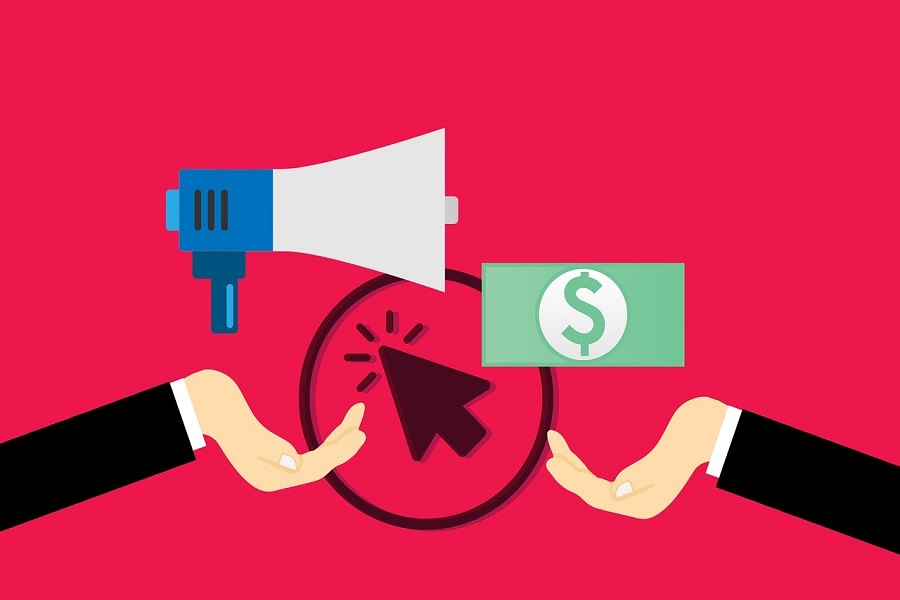Social PPC is similar to the pay-per-click campaigns that emerged in the mid-1990s. The main difference is that social PPC is optimized for social networks and sharing. If you need a refresher on PPC, or if you want to expand your knowledge of social PPC campaigns, then read on.
How Pay-Per-Click Works
The idea seems fairly simple now, but back in the 1990s, PPC campaigns were revolutionary. By paying an advertising platform a minimal fee, companies could advertise on multiple websites at an extremely low cost. Advertisers paid the platform by the number of clicks an ad received while displayed on the site. A low traffic platform wouldn’t decrease your advertising budget because you only had to pay if the site drew traffic. In this way, advertisers were able to make the most of their ad dollars and minimize risky ad expenses.
Today’s PPC campaigns are closely related to search engine ads. Companies pay to have ads placed at the top of search results. Not just any paid ad makes it to such heights. Ads are ranked by a variety of criteria including content quality, keyword relevance and landing page speed. If your ads meet certain criteria, then they will gain high placement on popular search engines.
How Social Pay-Per-Click Works
Social PPC is similar to traditional PPC but instead of appearing on search engine results, your business’ ads appear on social media channels. Perhaps the most famous social PPC platform is Facebook Ads, but there are others. Some companies are focusing on LinkedIn and other social networking channels geared to a specific demographic or professional audience.
Regardless of social network platform, your ad must still meet certain criteria in terms of quality and relevance. You also need to know your target audience. Since your ad spend goes to display ads designed to appear on specific social feeds, then your ad team must be aware of the online habits of your organization’s target audience. The greater the specificity the greater probability that your ad placements will yield credible leads. Ultimately, a well-conceived strategy will yield a higher ROI.
Planning Your Social PPC Strategy
Knowing your target audience is important, but it is only one factor involved in the creation of a lead generating marketing strategy. Social PPC strategists use terms like ad rank, quality score, maximum bid, display ad, cost-per-click and other terms, acronyms and jargon. A PPC CAMPAIGN GUIDE can help you understand these terms and can provide case studies that guide you through your campaign’s strategic development and implementation as well as post-campaign analysis. A guide also provides you with an overview of best practices, such as the importance of developing a campaign context that matches your organization’s mission. For instance, a step-by-step guide to creating a campaign that parallels your organization’s mission is one example of a best practice that could hold greater relevance to your team than a list of stand-alone marketing terms. In short, choose a guide or a consultant capable of providing both micro and macro PPC techniques.
Post-Campaign Analysis
Pay-per-click campaigns are still budget-friendly when compared to other media ad spend. Thirty years ago, advertising teams didn’t have the ability to track metrics at the granular level that today’s data pools have made possible. Simply measuring the number of clicks and comparing that to your investment is too simplistic today. Instead, advertising teams and data scientists can crunch numbers and track metrics such as:
- Conversion rate
- Keyword performance
- Quality score
- Cost per conversion
- CTR (click-through rate)
- Impressions
Part of your campaign strategy should include scheduled metric reviews. One of the benefits of social PPC is the ability to change course if a certain ad or platform is not performing at your desired rate.
Where to Start
Social PPC works when advertising and marketing teams leverage the unique capabilities of pay-per-click on a social platform. The biggest benefit of social PPC over traditional PPC is the ability to target specific audiences by developing detailed customer/buyer personas. This requires sales and marketing staff to conduct deep research into the prospective customers’ online habits, distribute surveys to potential target audience members and even conduct interviews.
There are numerous tools available to you as you research different strategies and social PPC techniques. Staying competitive means being aware of upcoming changes in the digital landscape. Once you’ve established your social PPC strategy, be prepared to tailor it for voice search users and look for ways to collaborate with multiple platforms and other marketers. Social PPC is always evolving. Get grounded in the basics and then prepare to scale and maximize your efforts.

